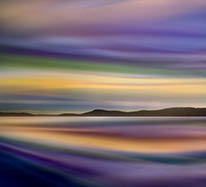Abstract

Abstract photography is often defined as images in which the subject is not immediately apparent. It uses the visual language of line, shape, and color to create images that function outside of references to an obvious subject. It removes recognizable detail and instead focuses on intuitive recognition.
It could be said that abstract is the most cerebral but also the most intuitive of all the different genres of photography. Abstract combines reason and intuition to come up with work that exhilarates both the photographer and the viewer.
Abstract images are cerebral and often ambiguous. They make the viewer think. And they raise questions. “What is it?” “Does it matter?” “How was the image made?” “Why was it made?” “What did the photographer have in mind when she made the image?” “What does it make me think of when looking at it?”
Abstracts communicate intuitively through:
Emotions. Abstract images make the viewer feel as if they’ve been transported to a place created by the image, a place of imagination and play. They can pique our curiosity and often cause a foolish laughter when we suddenly discover a new way of seeing.
Imagination. Abstract images encourage the viewer to create stories, to view things differently, to understand subjects outside of their stereotypes, not only in photographs but in daily life.
Play. Abstract images are full of play. The photographer ...

